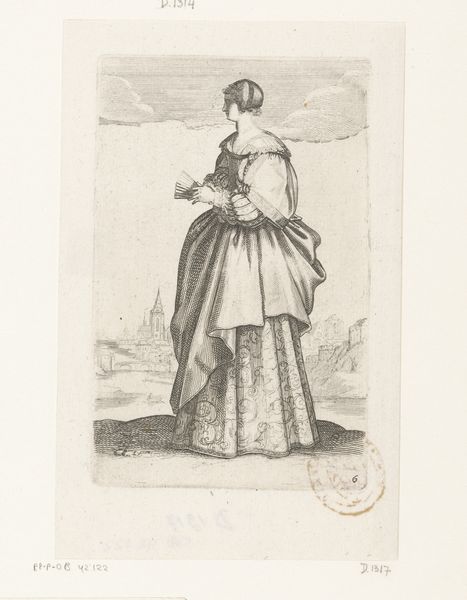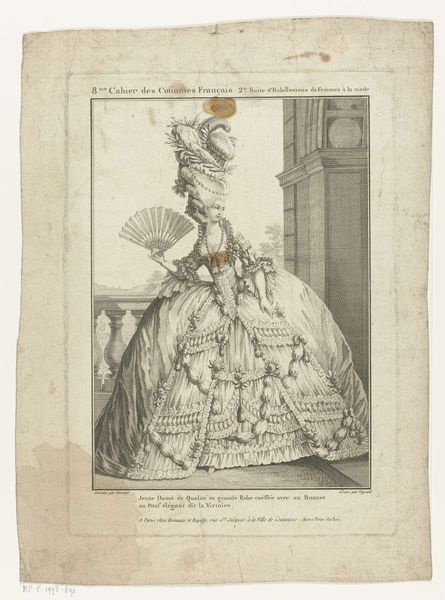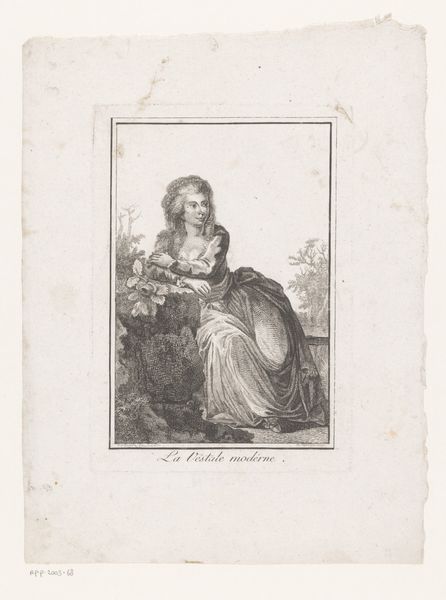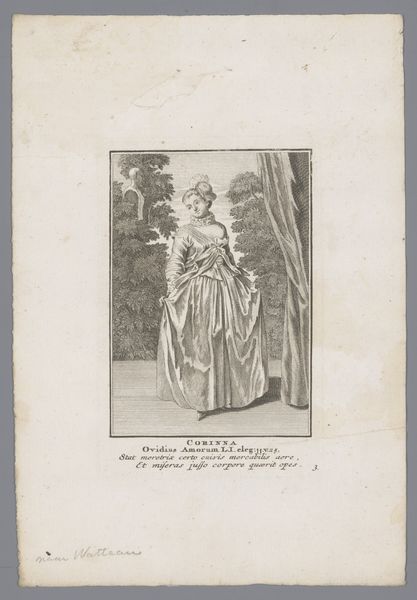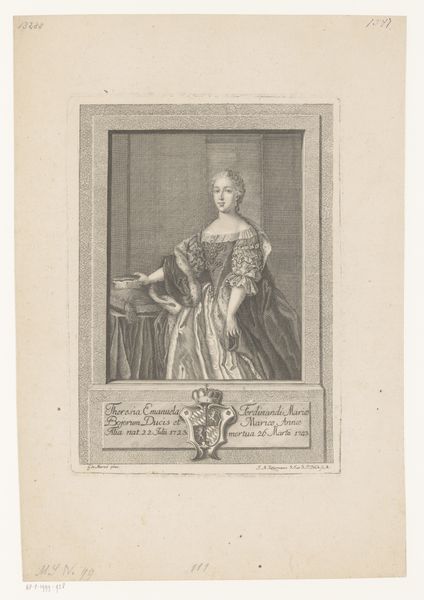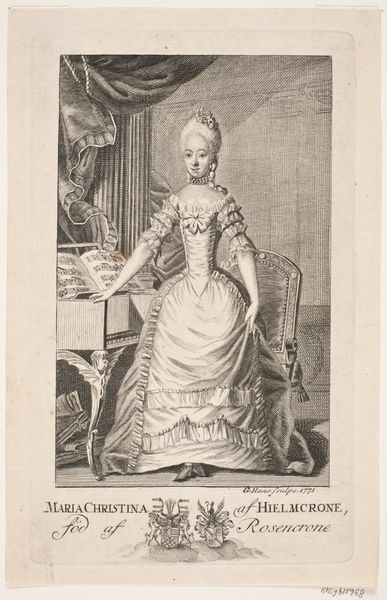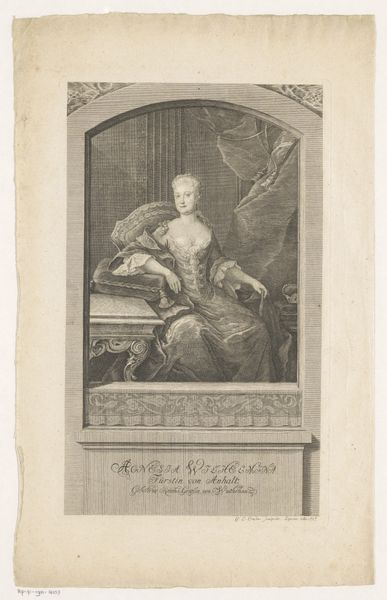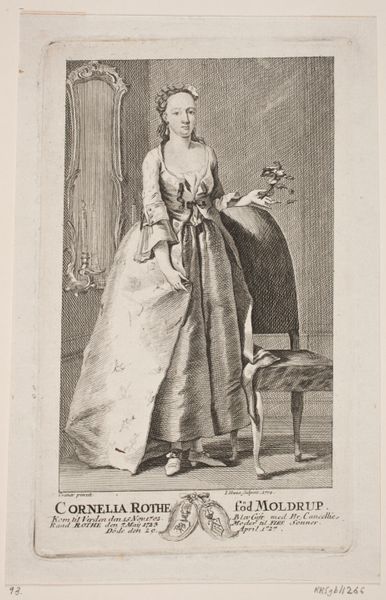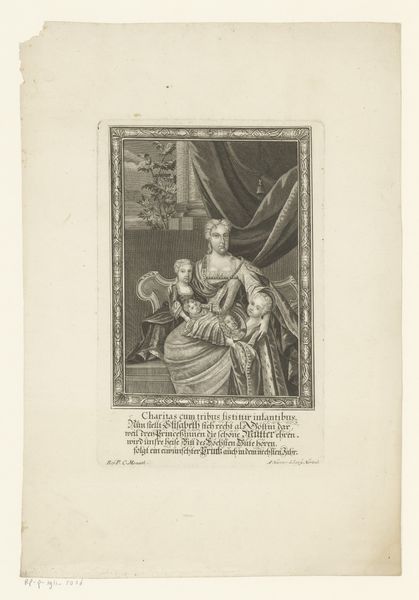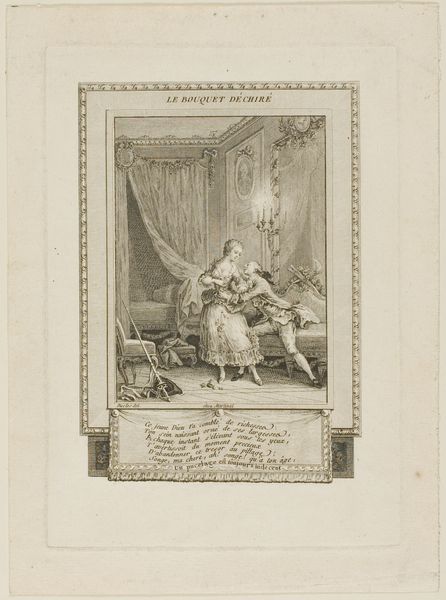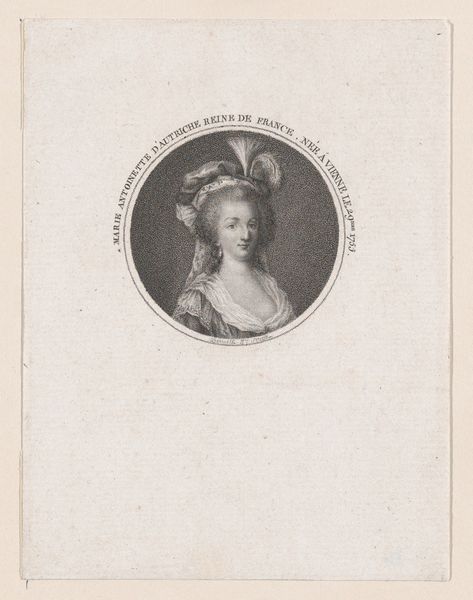
drawing, print, etching
#
portrait
#
drawing
# print
#
etching
#
genre-painting
#
rococo
Dimensions: Sheet: 9 13/16 x 7 1/2 in. (24.9 x 19 cm) Plate: 7 3/8 x 5 3/8 in. (18.8 x 13.7 cm)
Copyright: Public Domain
This is a portrait of Marguerite Le Comte made by Claude Henri Watelet in the 18th century. The artwork is an etching, a printmaking technique that relies on acid to ‘bite’ into a metal plate, leaving behind an image-bearing matrix. Look closely, and you can see the finely-worked lines, which create tone and shadow. This kind of linear precision demands a high degree of skill, with the etcher carefully controlling the depth and direction of each stroke. The controlled, yet intimate nature of the etching process, meant that it was well suited to portraiture, and became widely used as a means of circulating images of notable figures. Consider how these prints allowed for a wider dissemination of images, subtly shifting the dynamics of fame and recognition in the 18th century. As you admire this portrait, reflect on the artist's labor, the materiality of the print, and its role in shaping social perceptions during its time. We begin to see how what we call 'art' connects to the worlds of craft and social life.
Comments
No comments
Be the first to comment and join the conversation on the ultimate creative platform.
